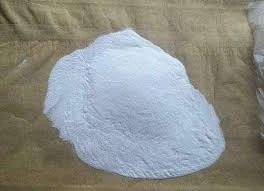Understanding Hydroxypropyl Methyl Cellulose (HPMC) in Chemical Applications
Hydroxypropyl methyl cellulose (HPMC) is a versatile, non-ionic cellulose ether widely used in various industries, including pharmaceuticals, food, cosmetics, and construction. Characterized by its unique properties, HPMC serves as a crucial component in numerous formulations, offering both functionality and stability.
Chemical Structure and Properties
HPMC is derived from cellulose, a natural polymer obtained from plant cell walls. The chemical modification process involves replacing hydroxyl groups in cellulose with hydroxypropyl and methyl groups. This alteration enhances the solubility of cellulose in water and modifies its rheological properties, making HPMC suitable for various applications.
HPMC is available in various grades, which differ in viscosity, molecular weight, and degree of substitution. These variations allow manufacturers to choose the appropriate grade for specific applications, tailored to meet unique performance requirements. One of the standout features of HPMC is its ability to form clear solutions in cold water, which is beneficial in numerous formulations.
Applications in Pharmaceuticals
In the pharmaceutical industry, HPMC is primarily used as a binder, thickener, and film-forming agent in drug formulations. Its exceptional film-forming properties allow for the creation of controlled-release medication, where HPMC regulates the release of active ingredients over time. This makes it invaluable in developing sustained-release tablets and capsules, enhancing patient compliance and therapeutic efficacy.
Furthermore, HPMC is used in ophthalmic solutions due to its ability to retain moisture and provide lubrication, which alleviates dry eye symptoms. Its safety profile is well-established, rendering it an ideal choice for products that come into contact with sensitive tissues.
Role in Food Products
chemical hpmc hydroxypropyl methyl cellulose

In the food industry, HPMC acts as a thickening agent, stabilizer, and emulsifier. It is commonly utilized in sauces, dressings, and ice creams, where it improves texture, viscosity, and shelf life. HPMC is also used in gluten-free products as a substitute for gluten, helping to enhance the structure and elasticity of baked goods.
The utility of HPMC in food applications is underpinned by its ability to retain moisture, thereby extending the freshness of products and improving mouthfeel. As consumers become increasingly health-conscious, HPMC’s role as a low-calorie additive has garnered attention, making it a favorable ingredient in health-focused products.
Utilization in Cosmetics
The cosmetic industry benefits from HPMC for its thickening, suspending, and emulsifying properties. It is widely found in lotions, creams, and personal care products, providing a smooth texture and enhancing the product's sensory experience. HPMC's ability to stabilize emulsions ensures that oil and water ingredients remain mixed, preventing separation and prolonging product shelf life.
Moreover, HPMC is gaining popularity in sustainable cosmetics, where its biodegradable nature aligns with the growing demand for eco-friendly ingredients. Consumers are increasingly seeking products that are not only effective but also environmentally responsible, positioning HPMC favorably in this competitive industry.
Contributions to Construction
Beyond its use in food, pharmaceuticals, and cosmetics, HPMC plays a significant role in the construction industry, especially in cement-based formulations. It contributes to water retention, workability, and adhesion of mortars, tiles, and plasters. By enhancing the application properties of construction materials, HPMC helps improve overall durability and performance.
In summary, hydroxypropyl methyl cellulose (HPMC) stands out as an essential ingredient across various industries due to its multifaceted properties and applications. Whether it is in pharmaceuticals promoting better drug delivery, in food ensuring texture and stability, in cosmetics enhancing user experience, or in construction guaranteeing performance, HPMC showcases remarkable versatility. As research continues and the demand for innovative and effective ingredients grows, HPMC is poised to remain a vital component in numerous sectors. Its broad applicability, coupled with a favorable safety profile, ensures that HPMC will continue to be a staple in formulation chemistry for years to come.
-
A Comprehensive Guide to Methyl Ethyl Hydroxyethyl Cellulose: Applications and Industry InsightsNewsNov.24,2025
-
Understanding Methyl 2 Hydroxyethyl Cellulose: Uses, Benefits & Industry InsightsNewsNov.24,2025
-
Hydroxyethyl Methyl Cellulose HEMC: Industrial Uses, Benefits & Future TrendsNewsNov.23,2025
-
HEMC Cellulose: Versatile & Sustainable Industrial Polymer | YoungcelNewsNov.23,2025
-
Methyl Hydroxyethyl Cellulose: Versatile Building Block for Industry & SustainabilityNewsNov.23,2025
-
CAS 9032 42 2: Understanding Polyvinyl Alcohol's Impact on Industry & SustainabilityNewsNov.22,2025




